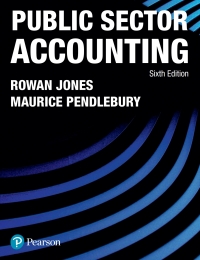Question
Preble Company manufactures one product. Its variable manufacturing overhead is applied to production based on direct labour-hours, and its standard costs per unit are as
Preble Company manufactures one product. Its variable manufacturing overhead is applied to production based on direct labour-hours, and its standard costs per unit are as follows:
| Direct materials: 4 kg at $9.00 per kg | $ | 36.00 |
| Direct labour: 3 hours at $15 per hour | 45.00 | |
| Variable overhead: 3 hours at $6 per hour | 18.00 | |
| Total standard cost per unit | $ | 99.00 |
The company planned to produce and sell 26,000 units in March. However, during March the company actually produced and sold 31,000 units and incurred the following costs:
- Purchased 155,000 kg of raw materials at a cost of $7.20 per kg. All of this material was used in production.
- Direct labour: 56,000 hours at a rate of $16 per hour.
- Total variable manufacturing overhead for the month was $524,720.
2. What is the materials quantity variance for March? (Indicate the effect of each variance by selecting "F" for favorable, "U" for unfavorable, and "None" for no effect (i.e., zero variance.).)
3. If Preble had purchased 171,000 kg of materials at $7.20 per kg and used 155,000 kg in production, what would be the materials price variance for March? (Indicate the effect of each variance by selecting "F" for favorable, "U" for unfavorable, and "None" for no effect (i.e., zero variance.). Do not round intermediate calculations.)
4. If Preble had purchased 171,000 kg of materials at $7.20 per kg and used 155,000 kg in production, what would be the materials quantity variance for March? (Indicate the effect of each variance by selecting "F" for favorable, "U" for unfavorable, and "None" for no effect (i.e., zero variance.). Do not round intermediate calculations.)
5. What is the labour rate variance for March? (Indicate the effect of each variance by selecting "F" for favorable, "U" for unfavorable, and "None" for no effect (i.e., zero variance.). Do not round intermediate calculations.)
6. What is the labour efficiency variance for March? (Indicate the effect of each variance by selecting "F" for favorable, "U" for unfavorable, and "None" for no effect (i.e., zero variance.). Do not round intermediate calculations.)
7. What is the variable overhead spending variance for March? (Do not round intermediate calculations. Round the actual overhead rate to two decimal places. Indicate the effect of each variance by selecting "F" for favorable, "U" for unfavorable, and "None" for no effect (i.e., zero variance.).)
8. What is the variable overhead efficiency variance for March? (Round the actual overhead rate to two decimal places. Indicate the effect of each variance by selecting "F" for favorable, "U" for unfavorable, and "None" for no effect (i.e., zero variance.).)
Step by Step Solution
There are 3 Steps involved in it
Step: 1

Get Instant Access to Expert-Tailored Solutions
See step-by-step solutions with expert insights and AI powered tools for academic success
Step: 2

Step: 3

Ace Your Homework with AI
Get the answers you need in no time with our AI-driven, step-by-step assistance
Get Started


